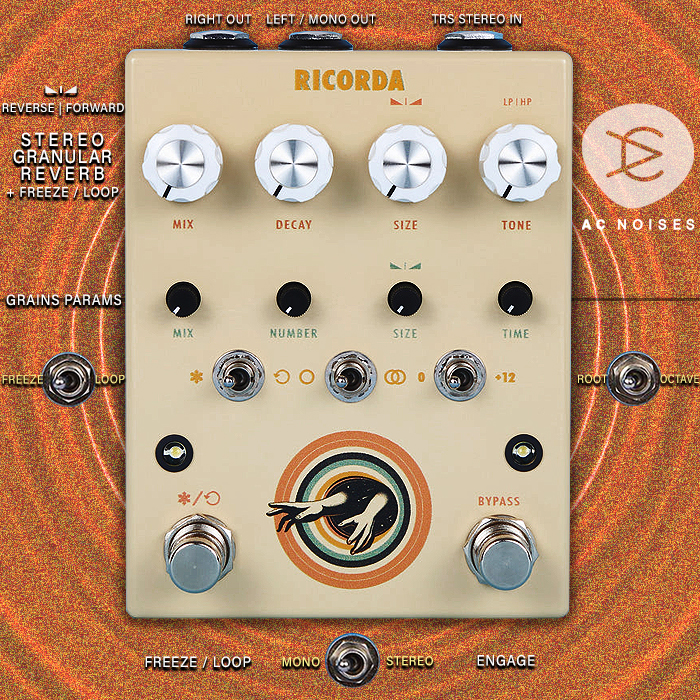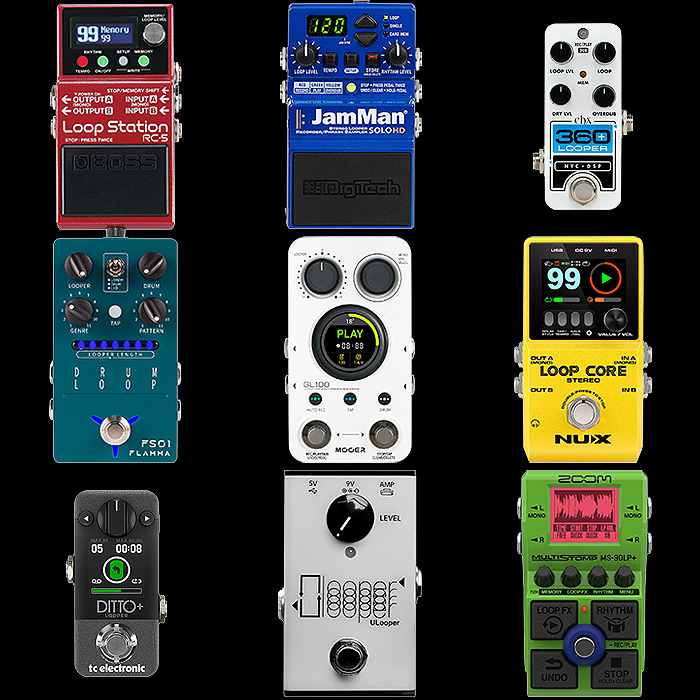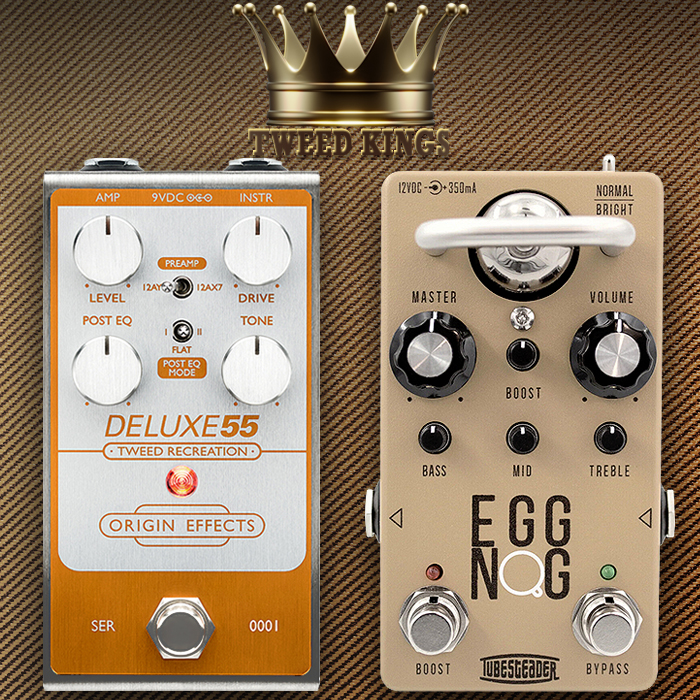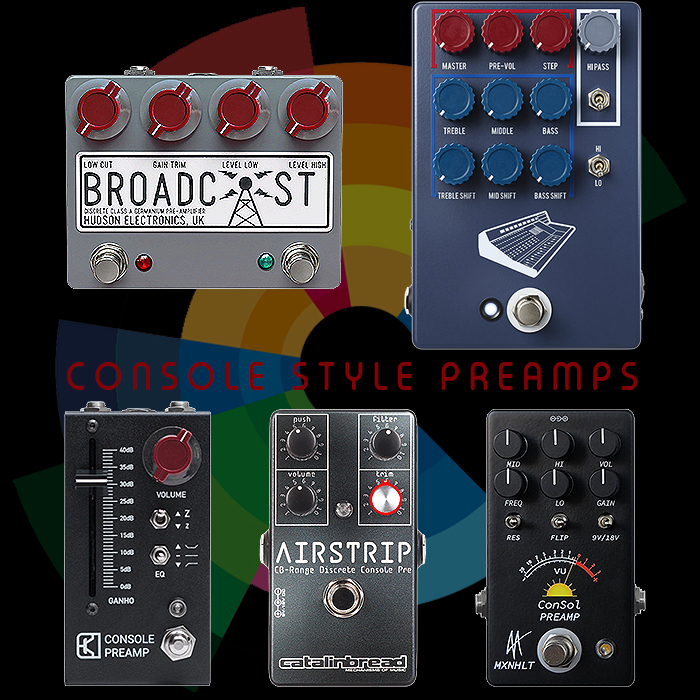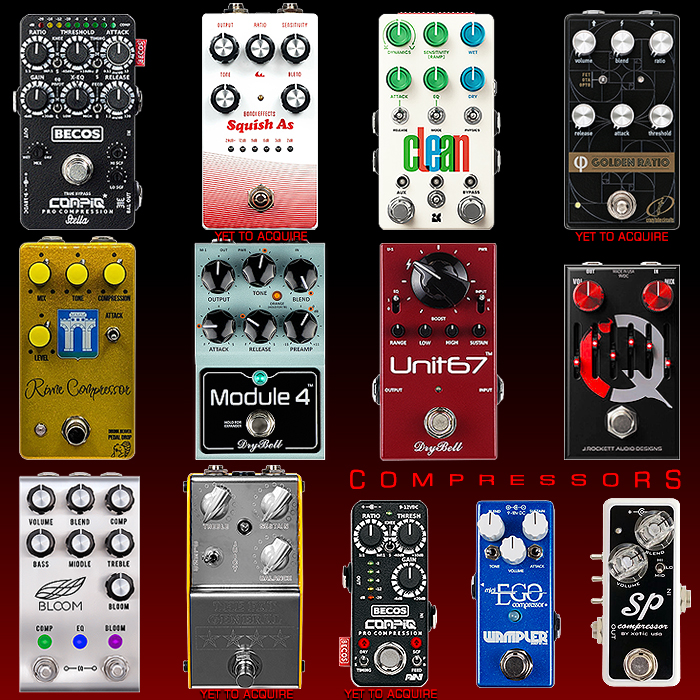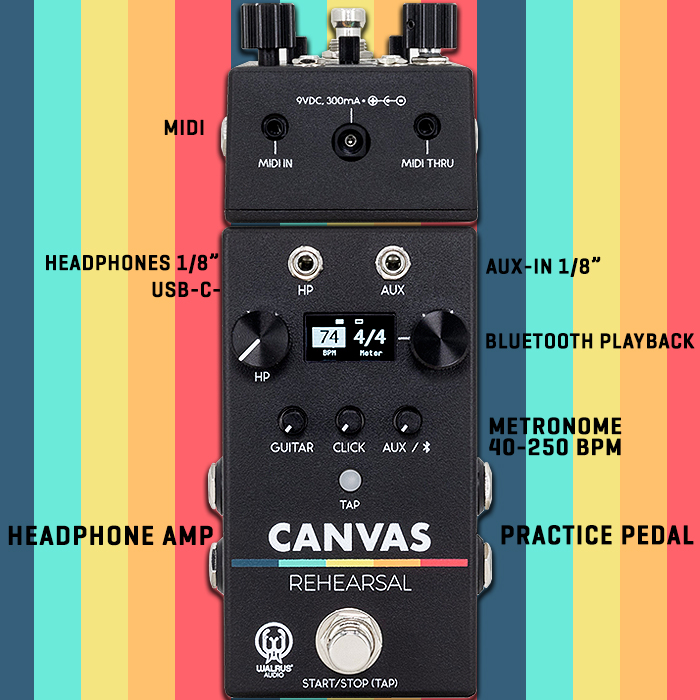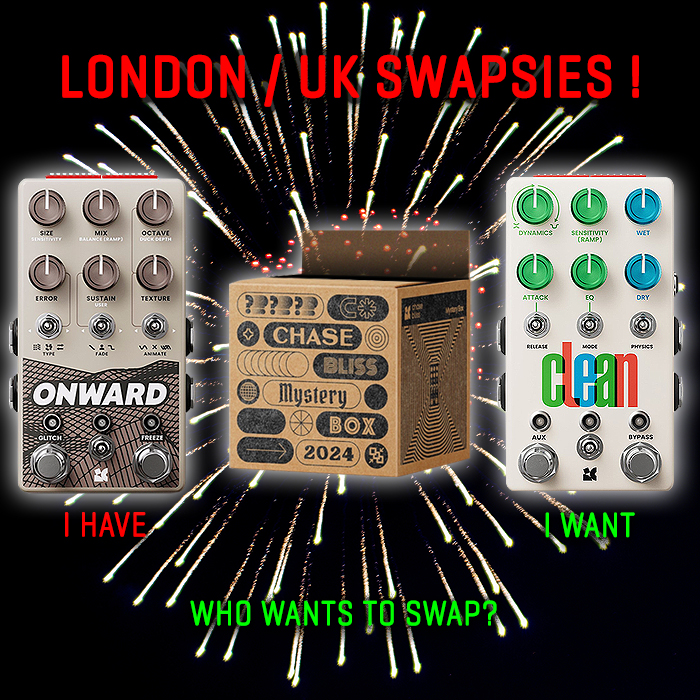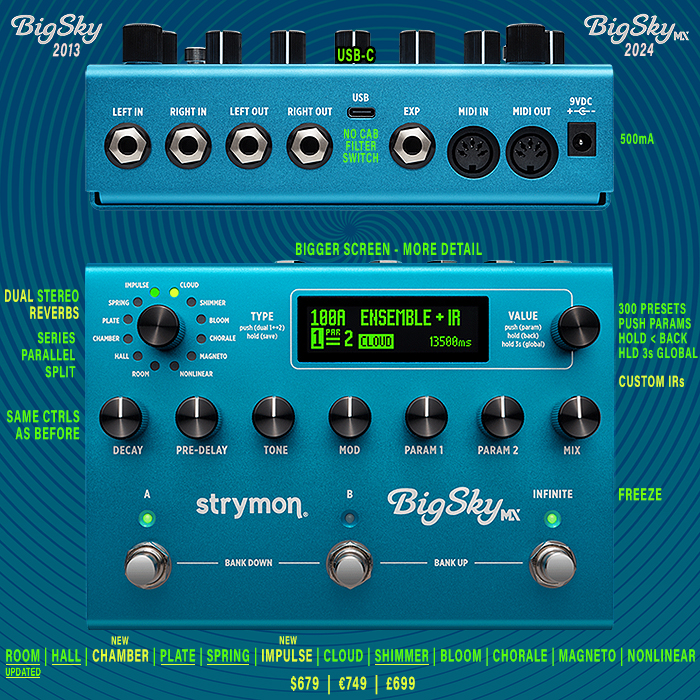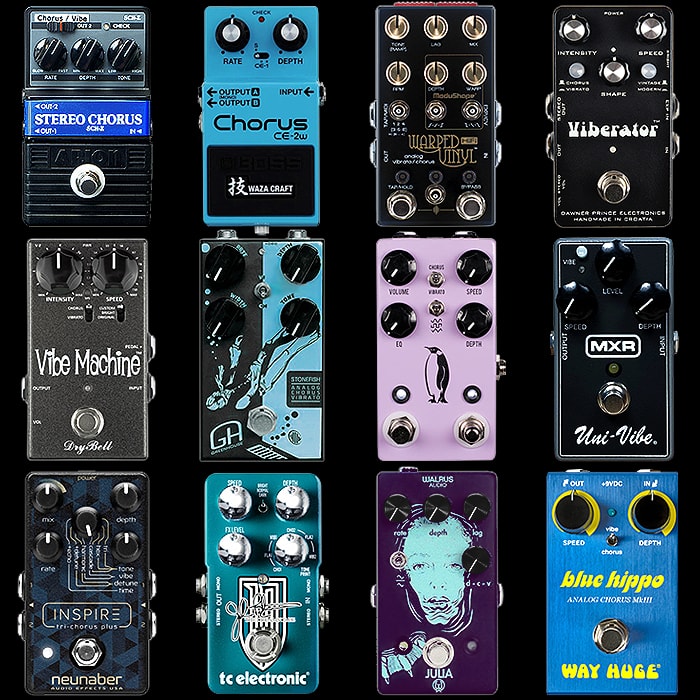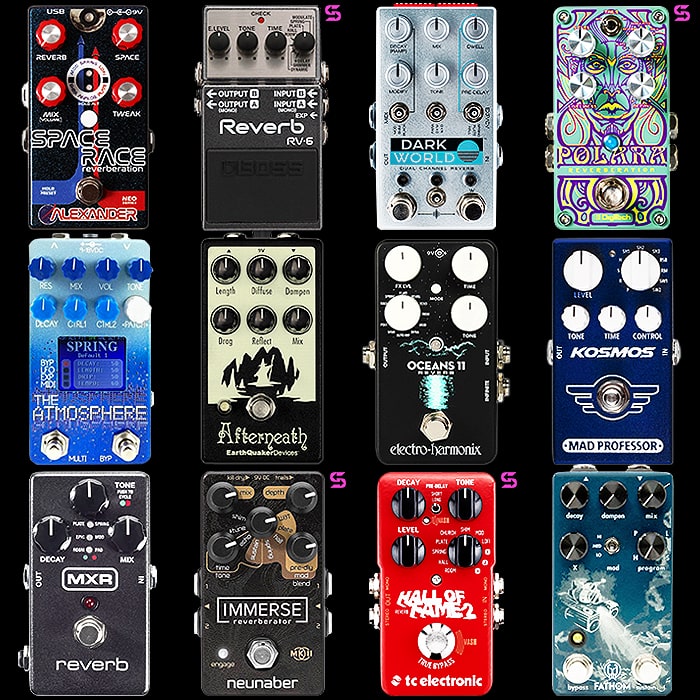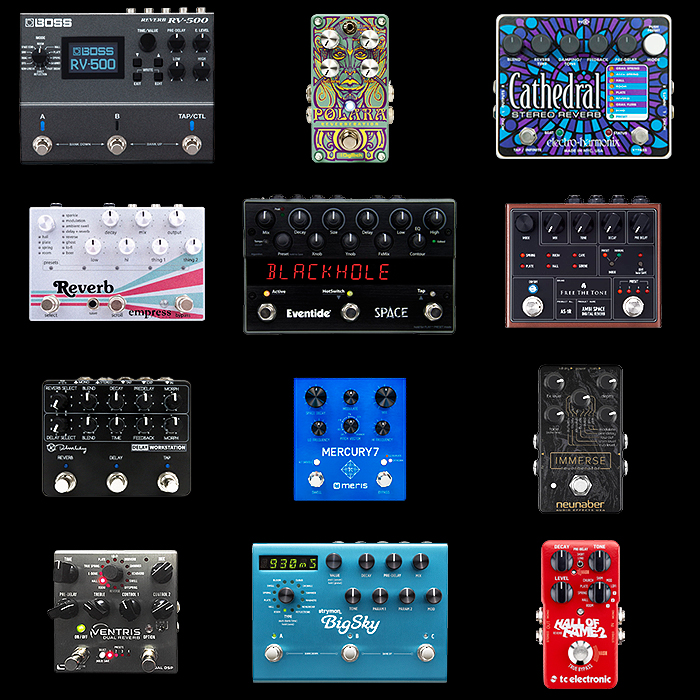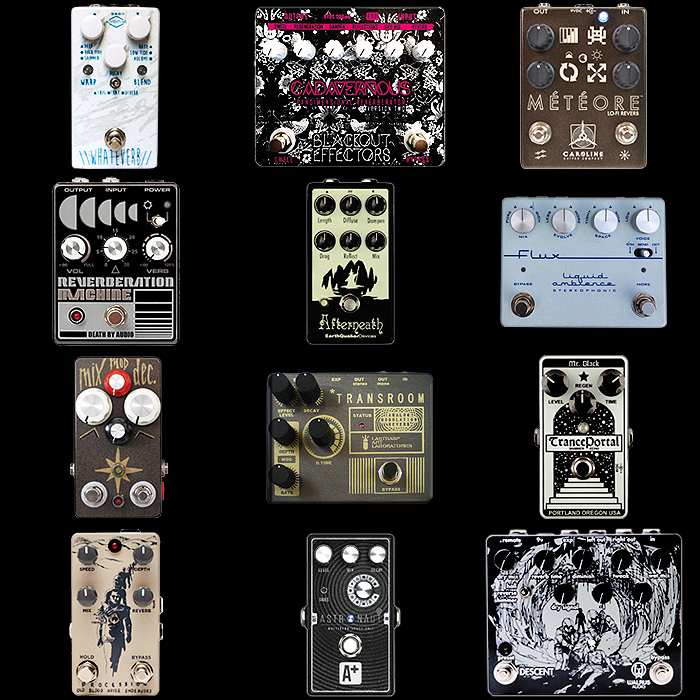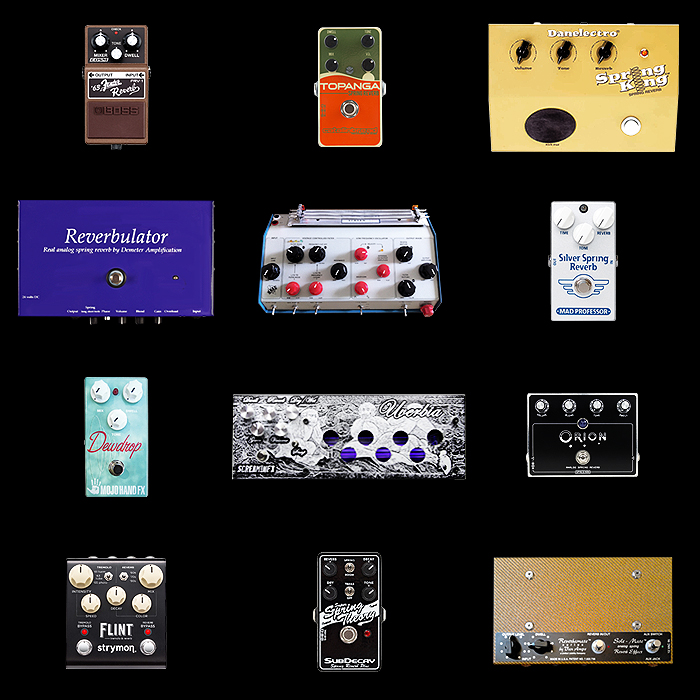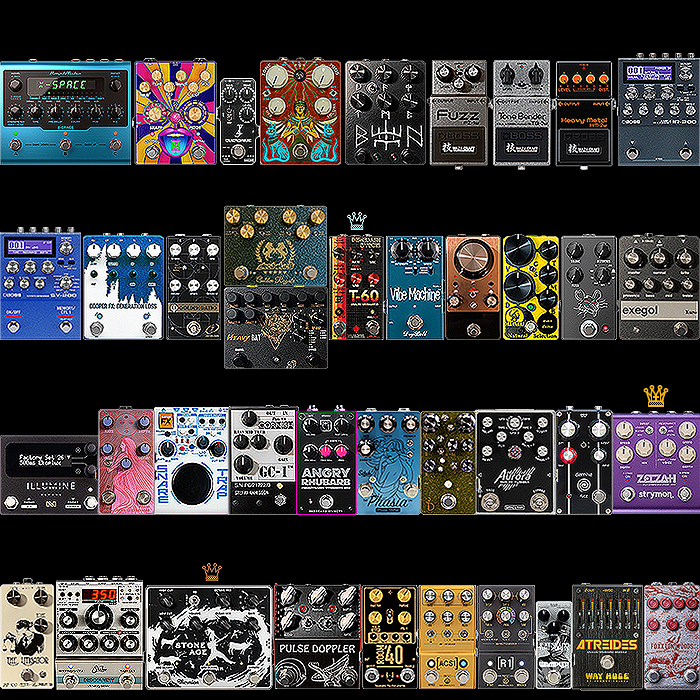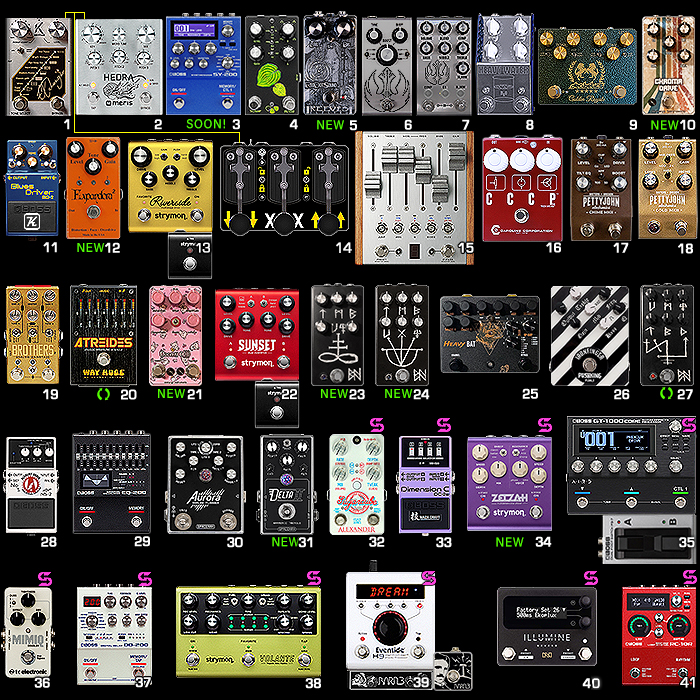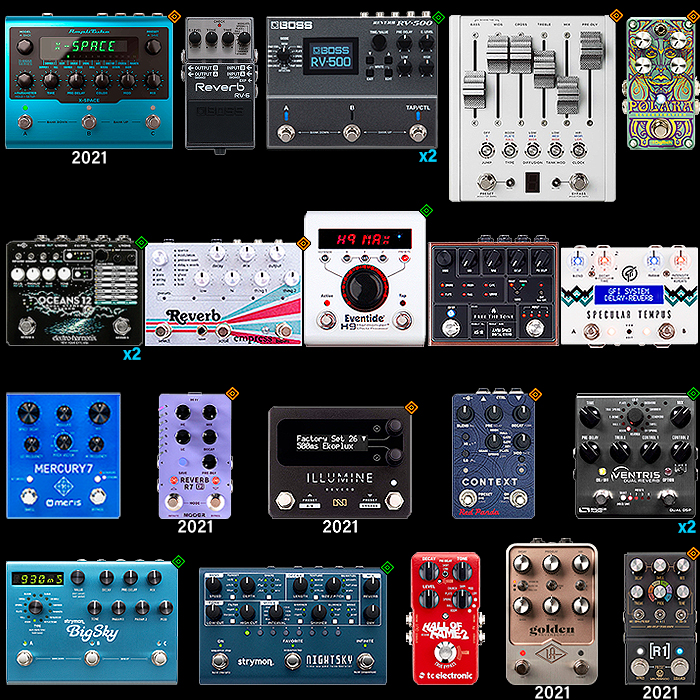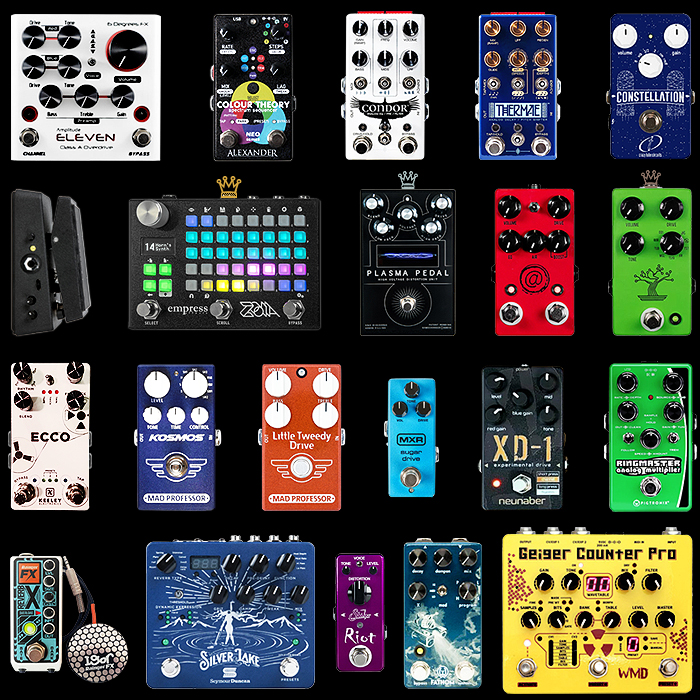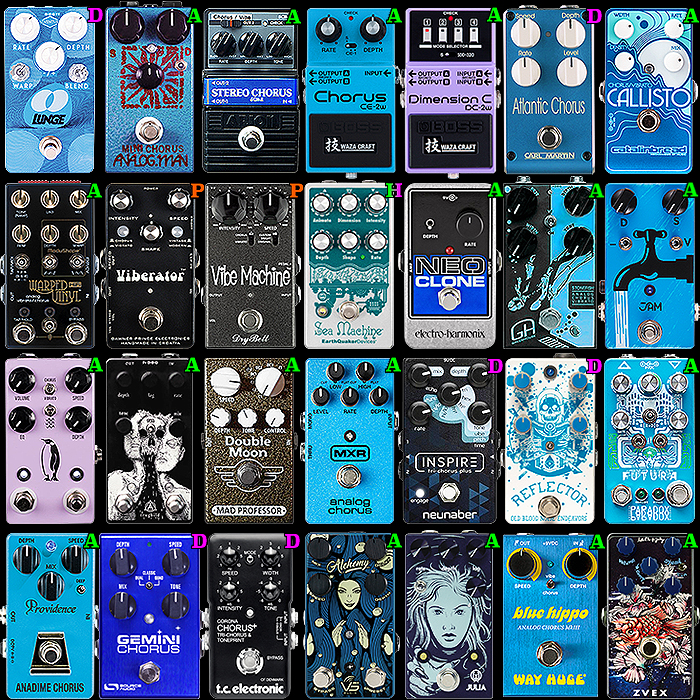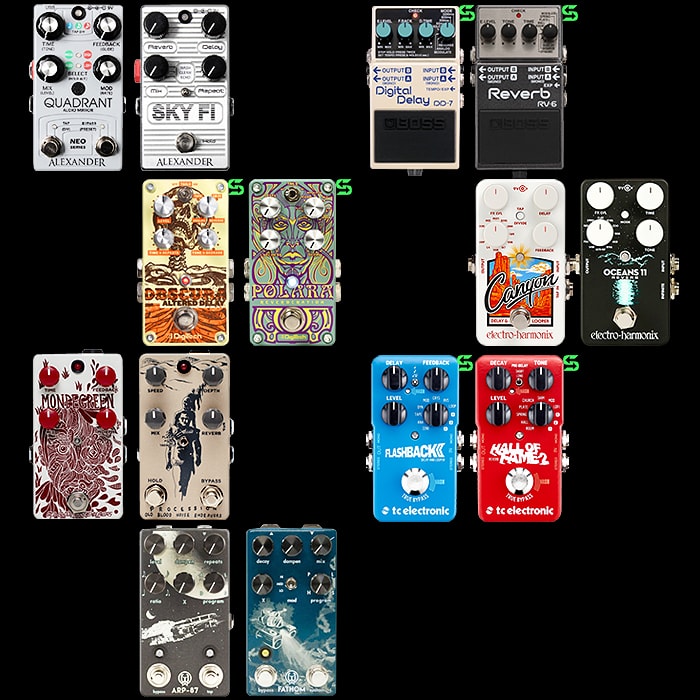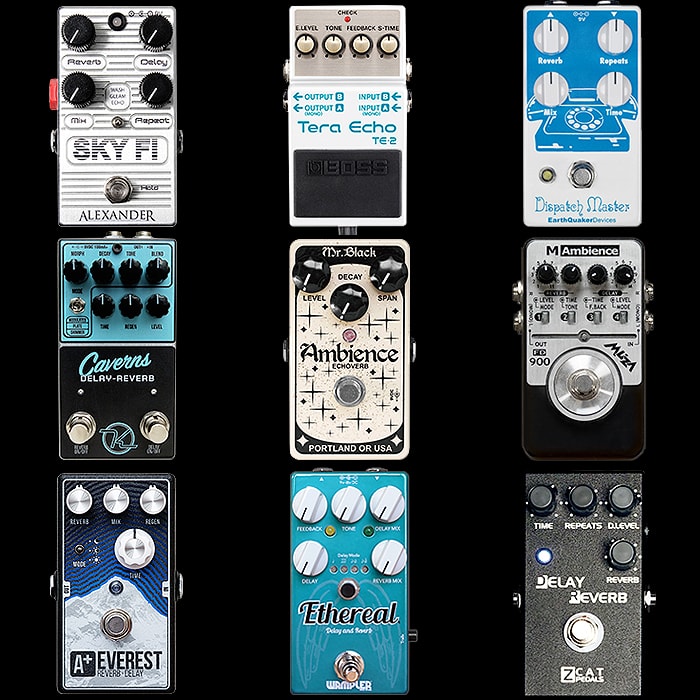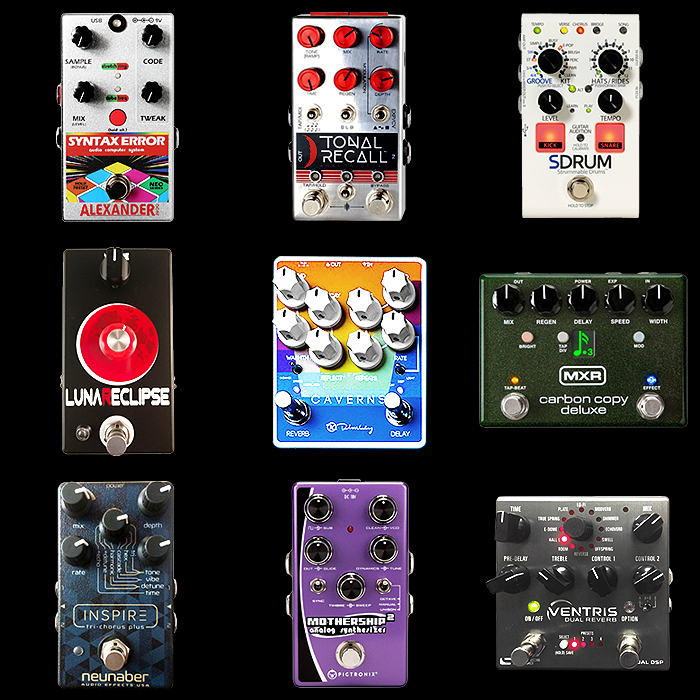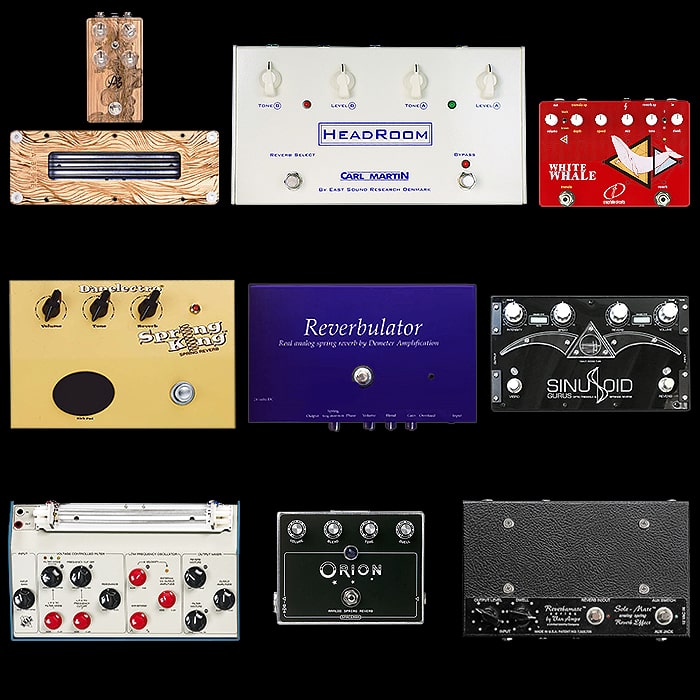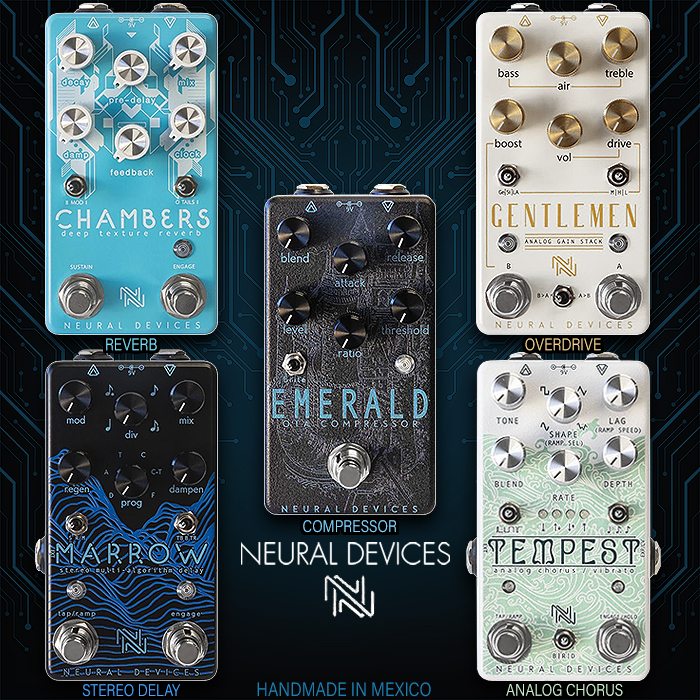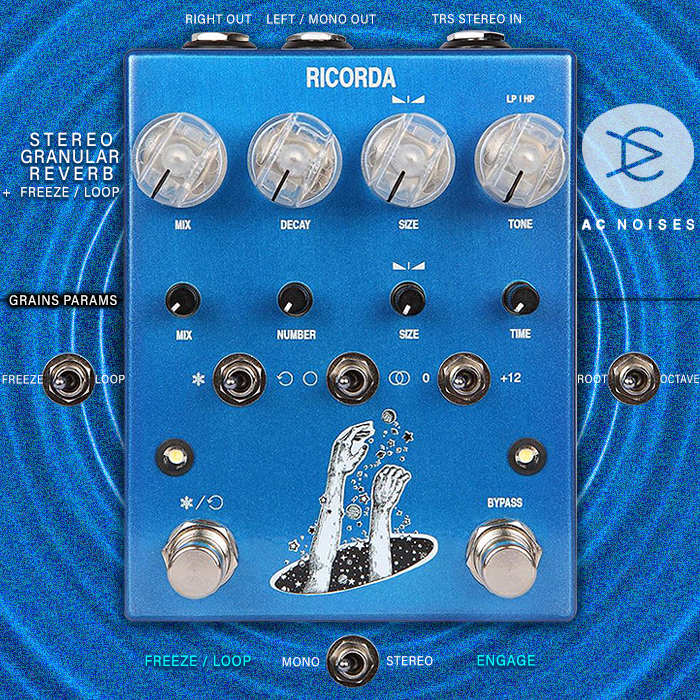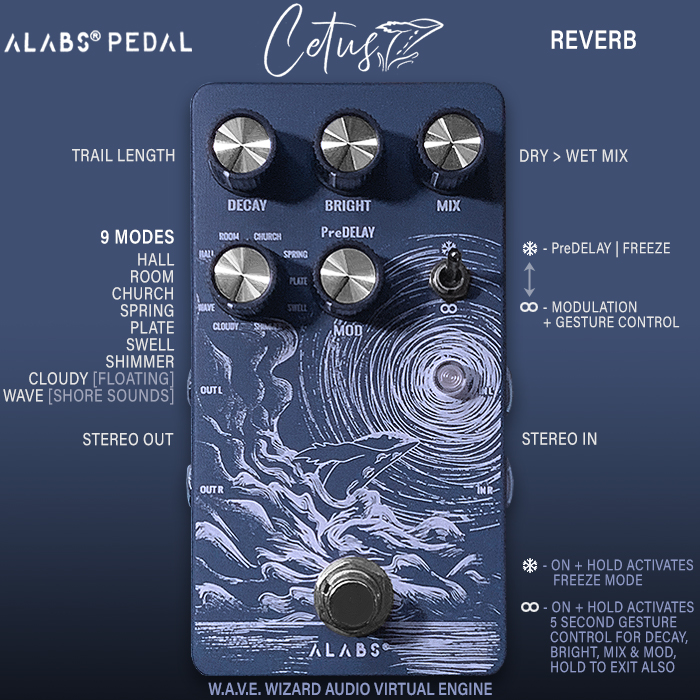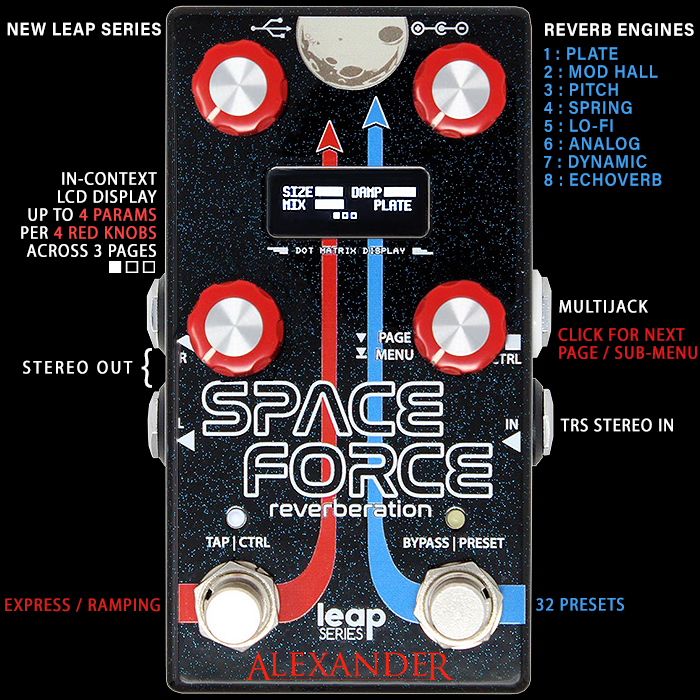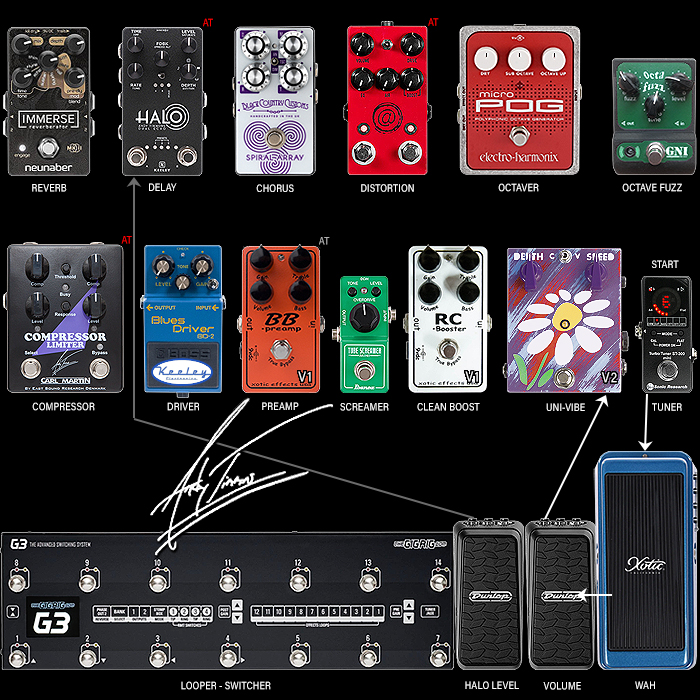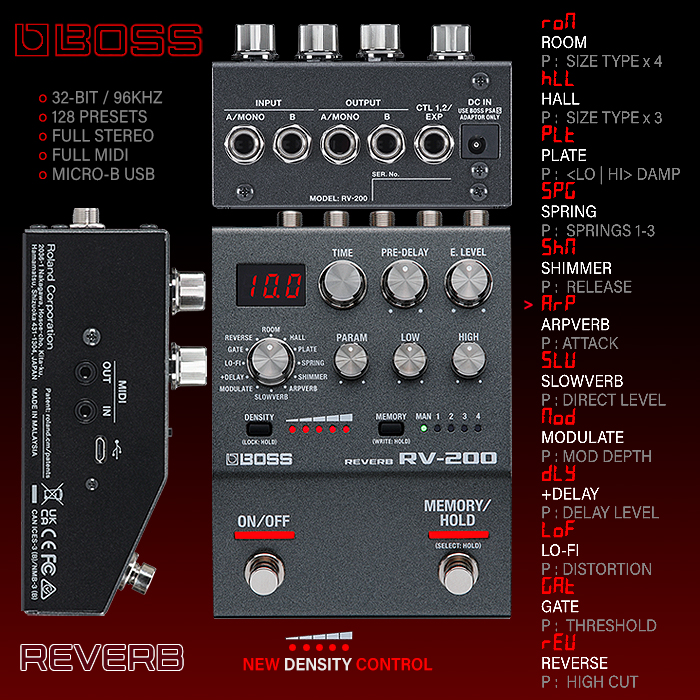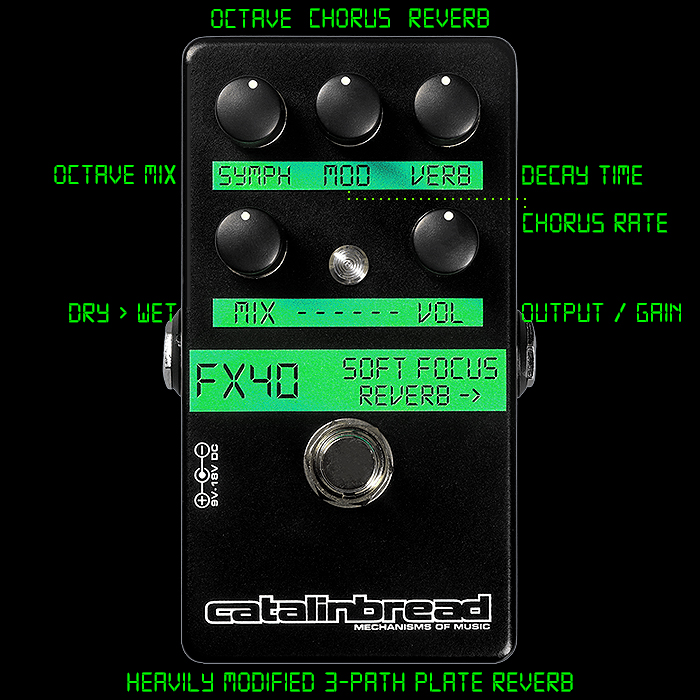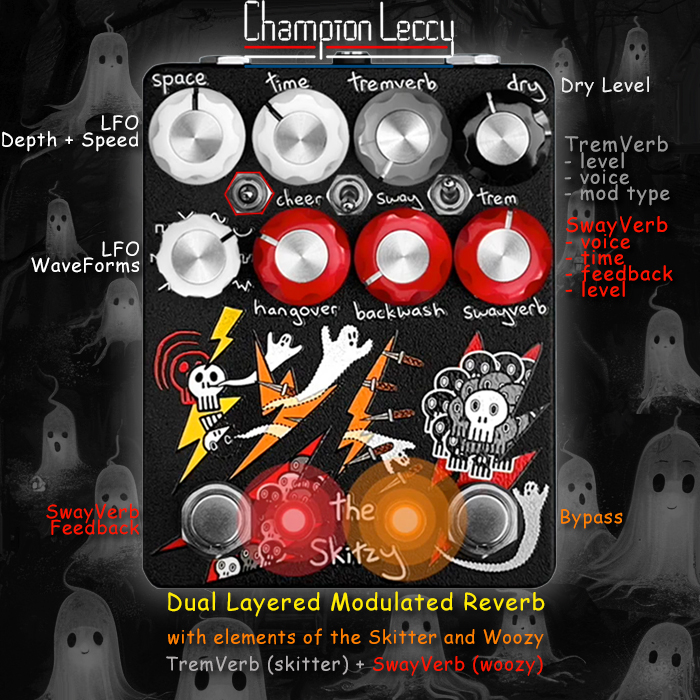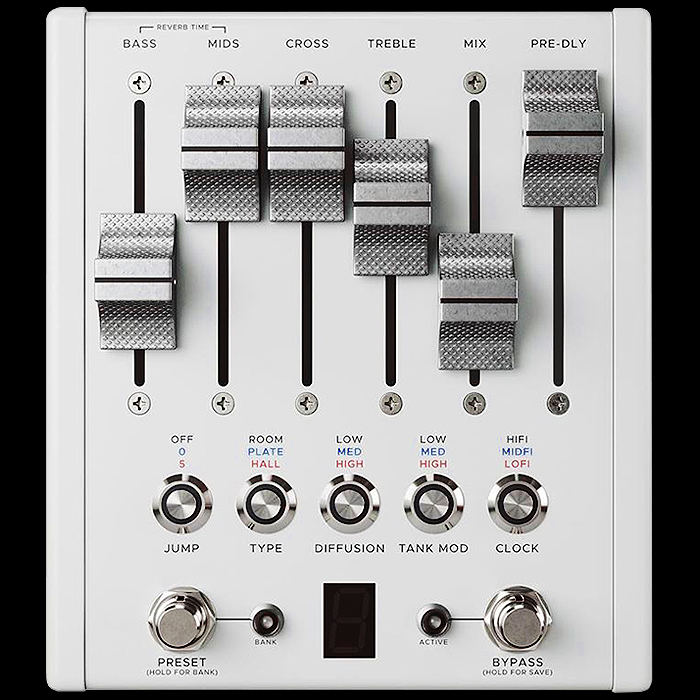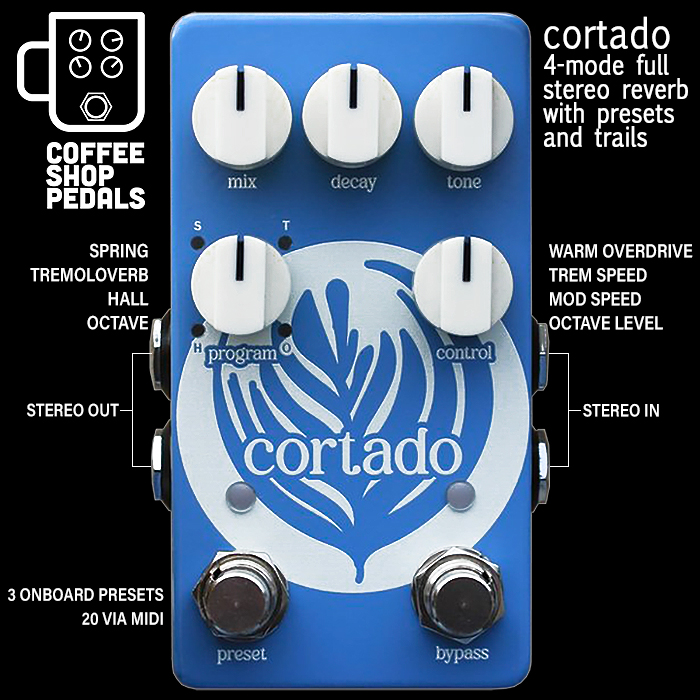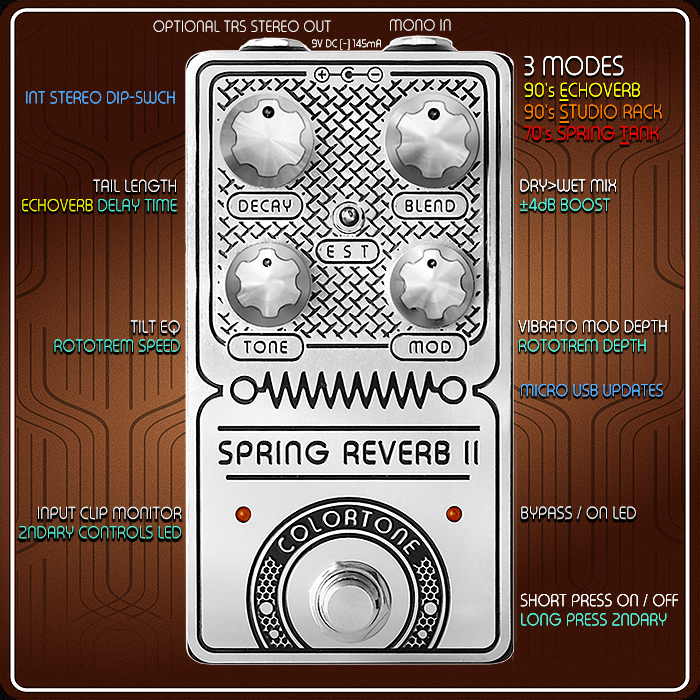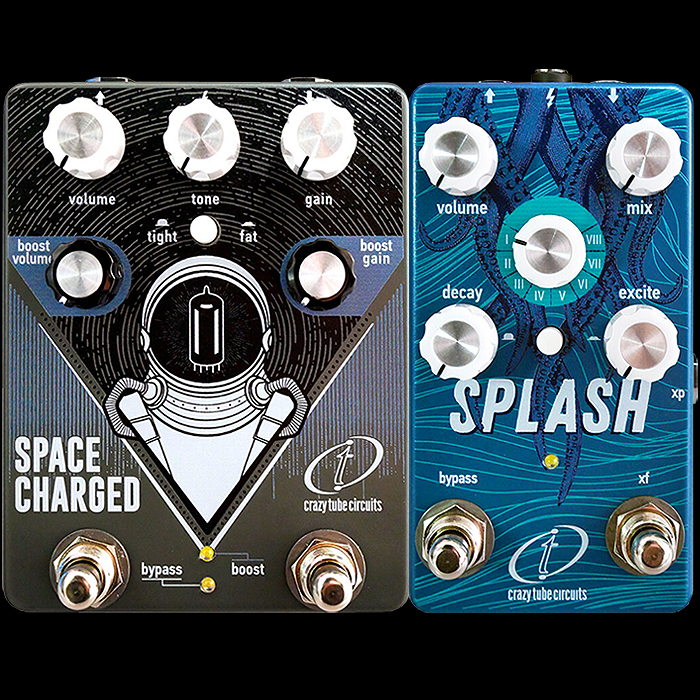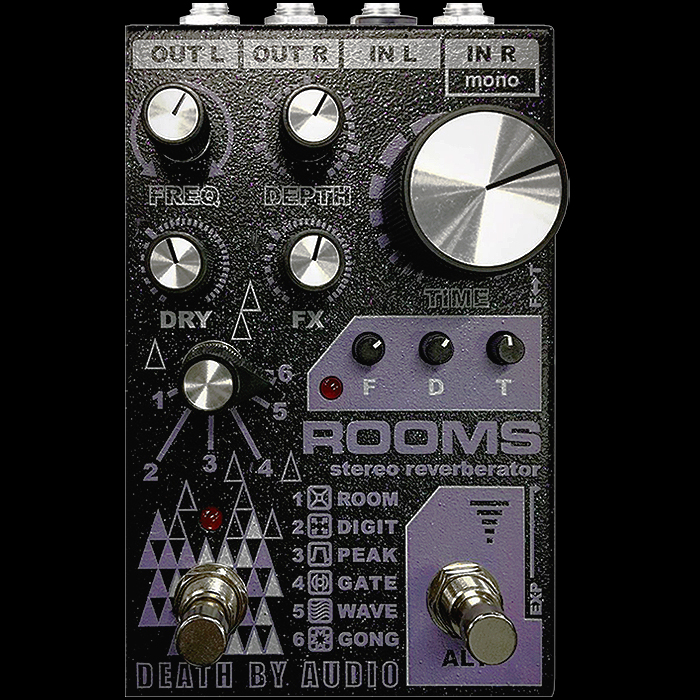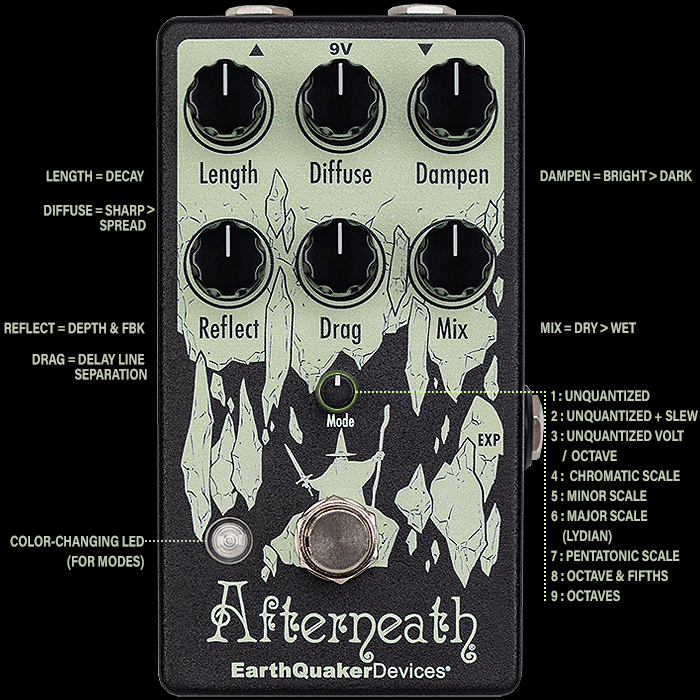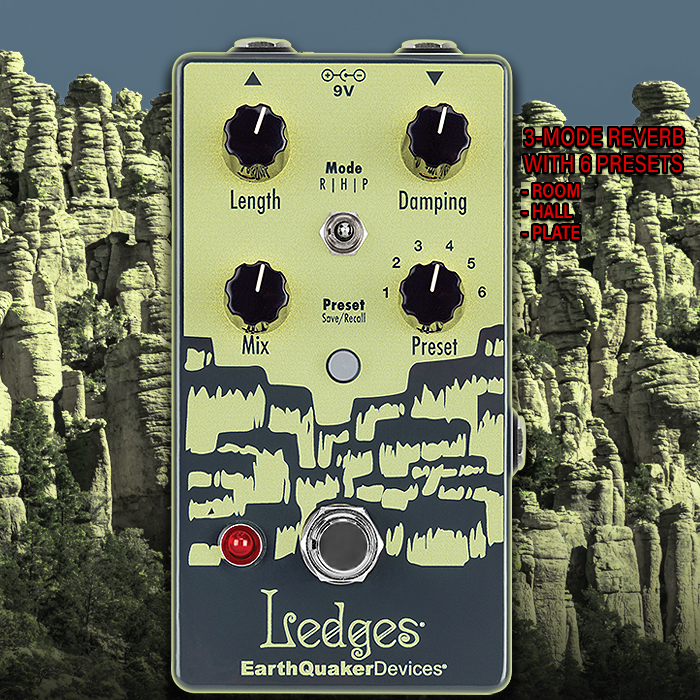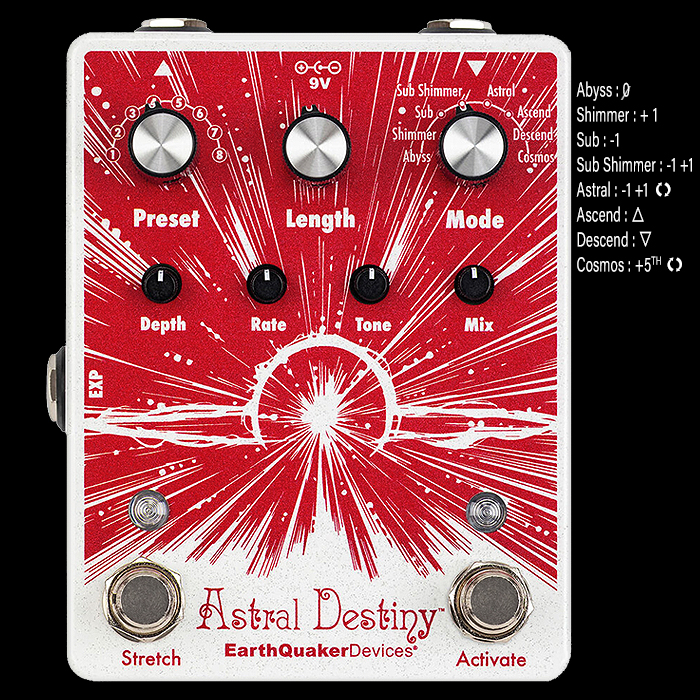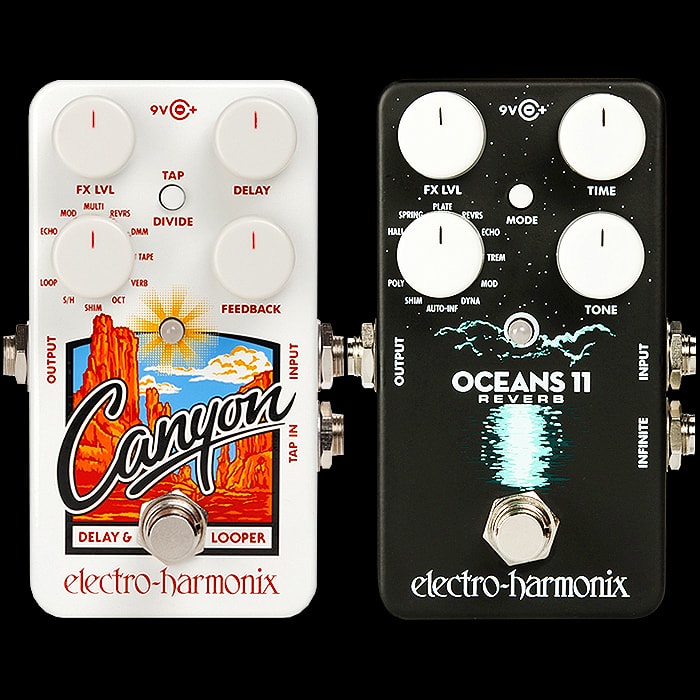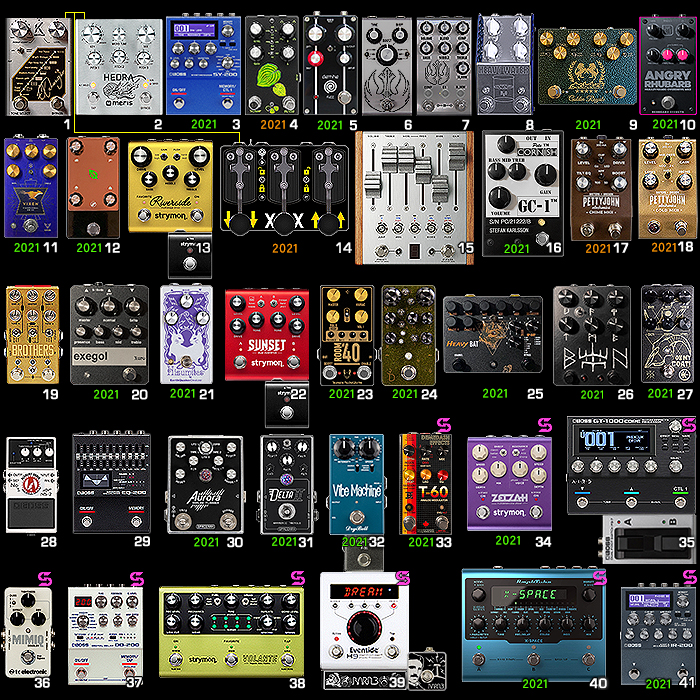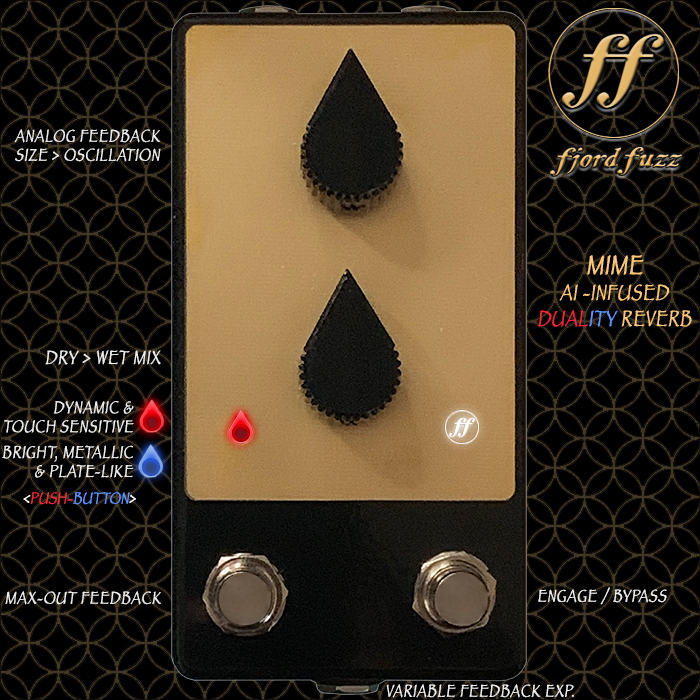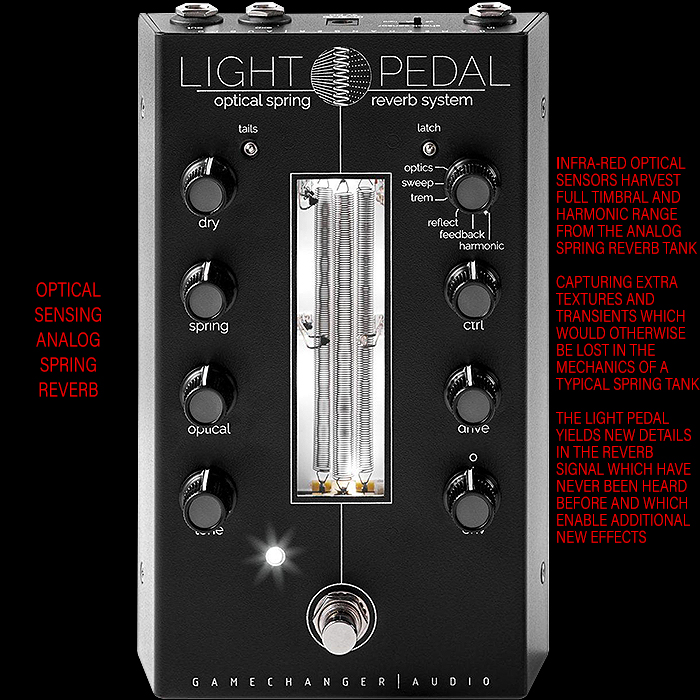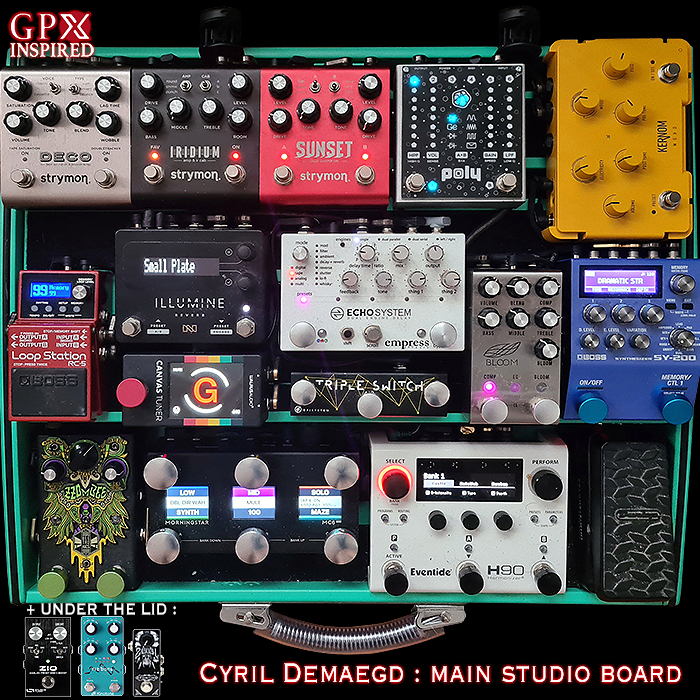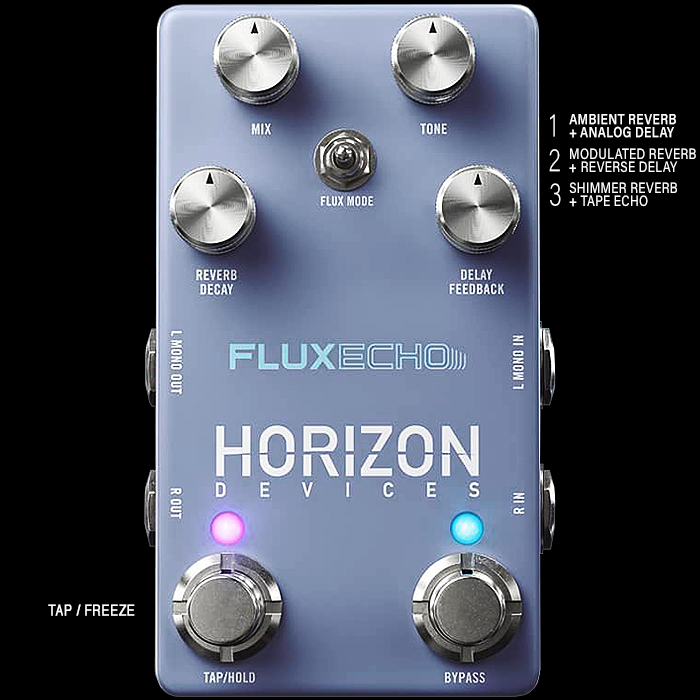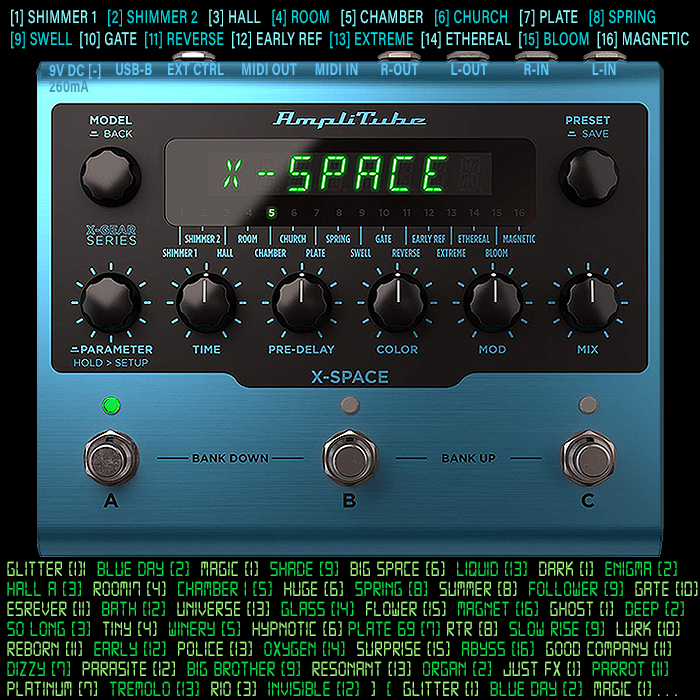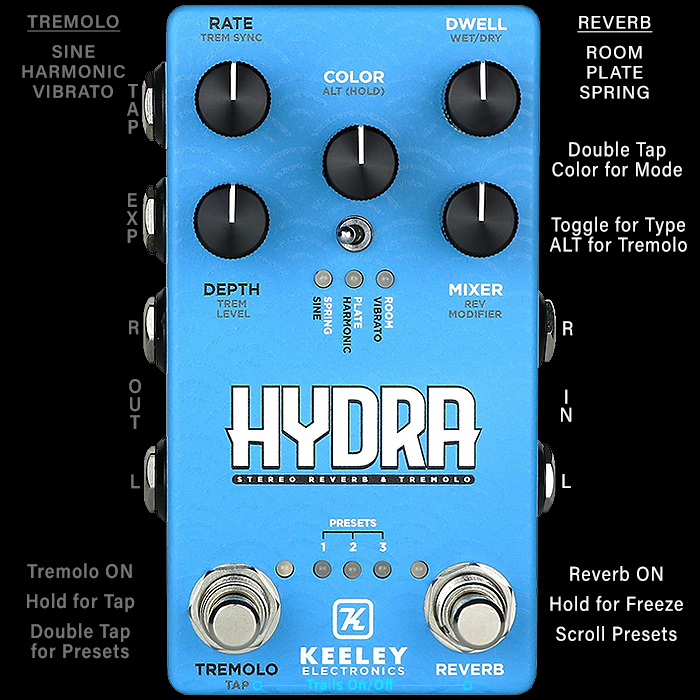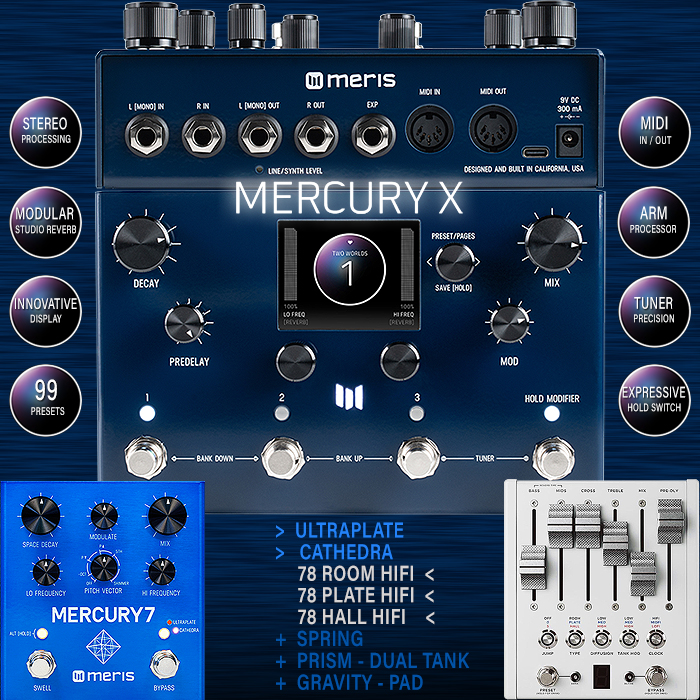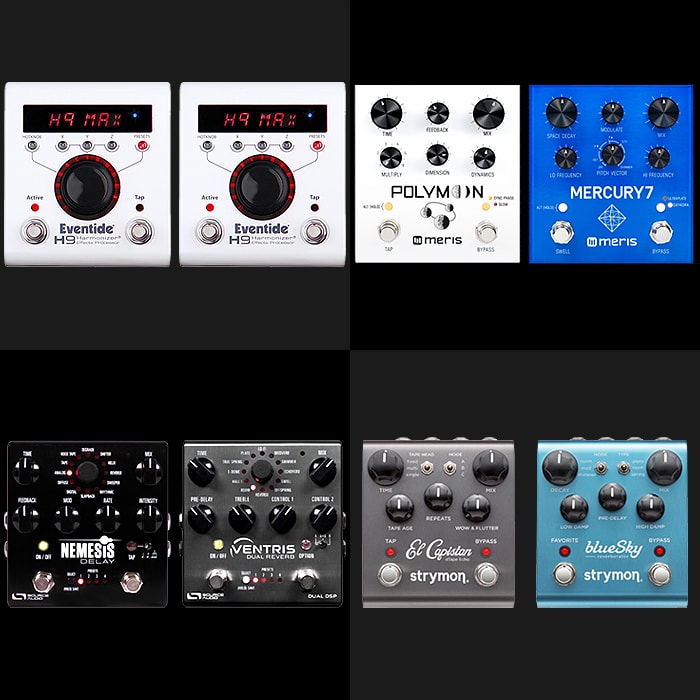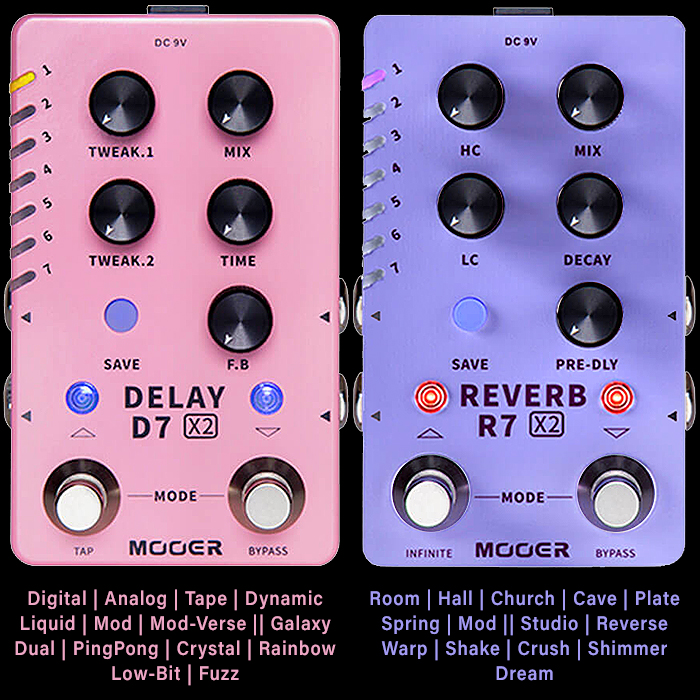Neunaber Levels Up with its Smart New 17-Algorithm, Preset-Laden Illumine Reverb Workstation
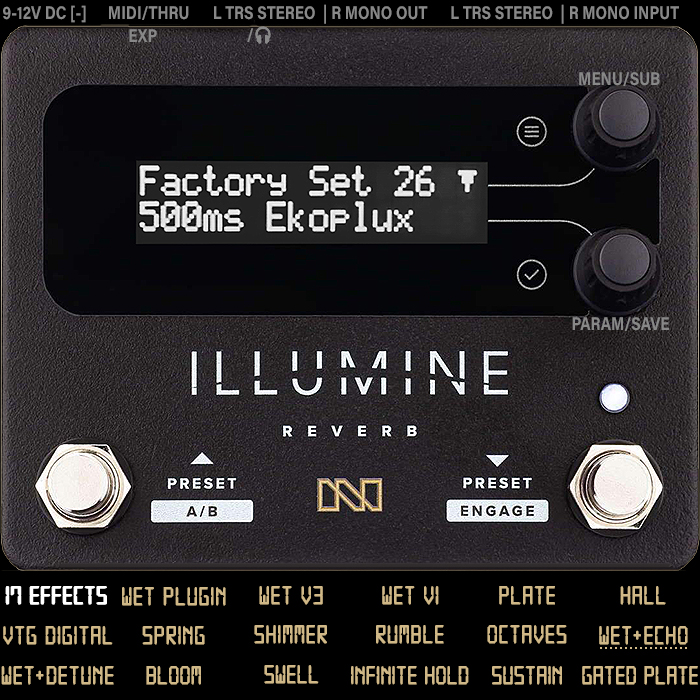
Neunaber has massively levelled up from its much celebrated compact Immerse Reverberator with its 8 Algorithms - Wet V3, Plate, Hall, Spring, Sustain, Echo, Detune, and Shimmer.
The new Illumine more than doubles the amount of Algorithms to 17, with 5 Parameter Controls for each. A very compact horizontal BB-size enclosure with highly visible screen and top-mounted jacks sets it apart form most of its competitors - which are typically much larger affairs.
My only apprehensiveness here is the fact that there are just two Twist / Push Knobs which control everything - which means scrolling through Parameters one at a time, and significant use of Sub-Menus - which I don’t always find the most intuitive or easy to use. If you compare with recent display / control innovations - like say on the Boss GT-1000 CORE, Cooper FX Arcades, Neural DSP Quad Cortex - there we are used to seeing most of the available parameters simultaneously onscreen - with as many as 11 physical controls to effect immediate changes.
One of the aspects of the Zoia I found somewhat annoying was just how much you had to control through the single main rotary encoder - also with lots of sub-sub menus etc. - while the Zoia also of course has that grid of 40 soft buttons. Both that and the new Illumine would be relatively tricky for on-the-fly tweaking - as you need to scroll through to each Parameter Setting - which if it’s the 5th Parameter Type - it is at the end of a lot of clicks and turns. I would need to get some first-hand experience of how easy that is to deploy - before making any final judgments, while the Illumine seems to be particularly well-appointed - with a great mix of Algorithms - albeit missing the essential ’Reverse Reverb’ type for my preferences - that is the only miss really.
I feel that the combination of range and form factor here makes this a very compelling and strong candidate - and is one of 5 very impressive new Reverb entries this year - alongside the AmpliTube X-Space, Mooer R7 X2, UAFX Golden Reverberator, and Walrus Audio Mako R1. I feel that the X-Space possible has a slightly better mix of Algorithms - including Reverse - while you can’t really fault the pristine quality of Neunaber’s formidable DSP Algorithms.
I’m definitely in for at least 1, but probably 2 new reverb pedals this year. The CBA CXM 1978 is still a forerunner, while I also would quite like an Empress Reverb. The Walrus R1 was looking like a likely candidate too - until this Illumine, and the X-Space appeared.
I’ve not drawn any lasting conclusions yet beyond noting that the Illumine is a very compelling proposition - note that the Empress Reverb has 32 Algorithms currently which is another significant level up - Immerse = 8, Illumine = 17, and Empress Reverb = 32 - each one sort of doubling up on the other’s capabilities!
Key Features
- 17 stellar Stereo Reverb effects cover all your reverb needs
- 50 professionally-crafted factory presets for superb tones right out of the box
- 50 user presets to customize and save your favourite settings
- MIDI input & thru/out - Controller mode replaces a simple MIDI controller
- Powerful, flexible expression control engine
- Use an external expression pedal or the built-in A/B switch with adjustable transition times
- Analog dry signal for low noise and zero latency maintains the integrity of your source tone
- Adjustable gain structure works with instrument or line-level inputs
- High contrast, wide viewing angle display is easy to read from a distance
- Small footprint with top jacks, ILLUMINE is easy to incorporate into your pedalboard.
- Power with a standard 9V DC [-] @ 100mA pedal power supply (not included). No need to run a separate power adapter or free up a high-current power port
- Manufactured locally in Orange County, California. Family owned and operated, Neunaber Audio is dedicated to bringing you the highest quality audio effects on the market
- MSRP $479, $379 Special Introductory Price
17 Effects / Algorithms
WET PLUGIN = Open, Natural Reverb based on Neunaber's Wet Reverberator Software Plugin, with slightly fewer parameters.
Parameters - Mix, Level, Depth, Tone Tilt, Mod Width.
WET V3 = Variation of Wet Plugin per Immerse MKII - with different tone-shaping options and lower initial reflection density.
Parameters - Mix, Level, Depth, Tone, Mod Width.
WET V1 = Original Reverb from the Wet Stereo Reverb pedal - designed to work particularly well with stringed instruments and guitar.
Parameters - Mix, Level, Depth, Tone, Mod Width.
PLATE = Studio Metal Plate Reverb with highly and densely diffused metallic sound.
Parameters - Mix, Level, Depth, Tone, Mod Width.
HALL = Emulates sound reflections of a well-designed Concert Hall - large and expansive Reverb.
Parameters - Mix, Level, Depth, Tone, Mod Width.
VINTAGE DIGITAL = Inspired by Vintage Digital Rack Units - diffused and synthetic and quite distinct from Plate, sounds super spacey on synths.
Parameters - Mix, Level, Depth, Tone, Mod Width.
SPRING = Transducer-suspended Spring Reverb Emulation with distinct 'twerb'. This is V3 of the Spring Reverb Algorithm - capable of really great classic vibrato-spring reverb sounds.
Parameters - Mix, Level, Depth, Tone, Mod Rate.
SHIMMER = Synth-pad-like Reverb with twinkly octave-style effects.
Parameters - Mix, Level, Depth, Shimmer Level, Frequency.
RUMBLE = Low-Frequency Drone for a deep, cavernous reverb sound - sound great with synths.
Parameters - Mix, Level, Depth, Rumble Mix, Frequency.
OCTAVES = Combination of Wet V3 Reverb with Dual Up/Down Octave Generators. Each octave is mixed with the dry signal at your preferred level of mix.
Parameters - Mix, Level, Depth, -1 Octave Mix, +1 Octave Mix.
WET + ECHO = This adds Stereo Echo to the Wet V3 Reverb - the Depth Param controls both Reverb Decay and Echo Repeats.
Parameters - Mix, Level, Depth, Echo Time, Blend.
WET + DETUNE = Add Detune Effect to Wet V3 Reverb. A downward modulating pitch-transposer which creates a thick, chorus-like effect, without the warble of a traditional chorus.
Parameters - Mix, Level, Depth, Detune, Blend.
BLOOM = Slower-Building variation of the Vintage Digital Algorithm. Increasing the Pre-Delay further delays / offsets the 'Bloom'.
Parameters - Mix, Level, Depth, Tone, Mod Width.
SWELL = Typically operated with Mix set to 100%. If the Mix Sum Type is configured as Unity Dry - the Swell may not operate as expected.
Parameters - Mix, Level, Depth, Tone, Attack.
INFINiTE HOLD = Wet V3 Reverb with a Hold/Freeze function. The hold function captures and repeats a 100ms loop - just enough for a single note or chord.
Parameters - Mix, Level, Depth, Tone, Latch/Blend.
SUSTAIN = Special Sustaining / Virtual Infinite Reverb. An infinite hold loop which decays out over set Release interval.
Parameters - Mix, Level, Release, Hold Time, Sensitivity.
GATED PLATE = The Plate Reverb with infinite Depth, Gated by the input level. Works best on percussive sounds - think Phil Collins 'In the Air'!
Parameters - Mix, Level, Time, Tone, Release.
Demos
Final Thoughts
I feel at the introductory price of $379 this is a particular strong candidate, a little less appealing at its RRP of $479. And as mentioned - the only hesitancy I have here is over those very minimal controls - and the fact that you need to scroll through everything and utilise quite a few Sub-Menus.
The beauty of analog pedals is having multiple direct controls available for highly visual and super-quick tweaking of key parameters. For Digital Pedals.- having to click into menus and scroll through parameters to edit is no doubt a little clunky. While I'm not yet clear on what manner of challenge or encumbrance that would present for me here.
I like a great deal about this new pedal - and in fact the minimal controls also can have a certain appeal - compact form factor, top-mounted jacks etc. Most everything seems to be in place - with the exception of the desirable Reverse Reverb Algorithm - while many will decide that said particular algorithm is surplus to requirements.
If you were ever thinking of getting a Neunaber Immerse - this doubles down on that with 17 Algorithms versus the former's 8, and then 50 Factory Presets, and 50 User-Definable Presets. Which is how most will use this pedal - simply scrolling though those 2 banks of 50.
I need to process this a little further to figure out where it sits within my own hierarchy and preference list. For a long time I've been planning to get the CBA CXM 1978 next - while the new Neunaber has certainly given me cause and pause for further consideration.
I feel this will do just as well for Neunaber as its well-loved Immerse - what do you readers think - and is anyone considering adding one of these fairly imminently?
Note that I will be doing a further Stereo Reverb Workstations Overview soon - which I will likely limit to 20 or so favourite / preferred candidates as there is just too much out there to cover fully in detail otherwise. My Top 20 should be good enough for most - and I will by all means cover other honourable mentions, while only focusing on 20 in detail! In fact I've drawn up that list now - and it's a solid selection - with 5 included from this year's releases!








